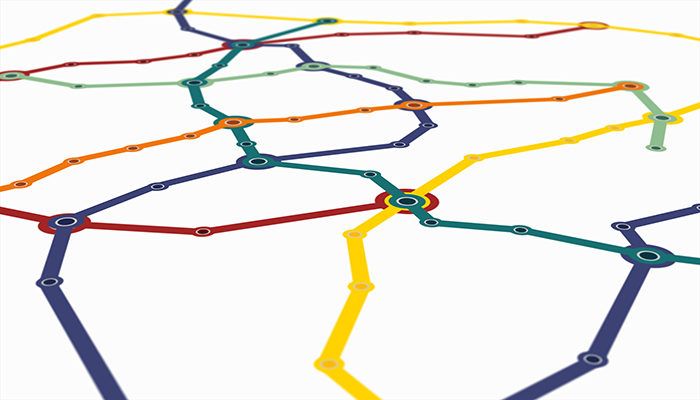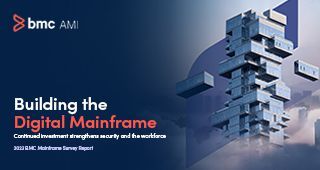Forrester recently conducted a study to understand how enterprise decision makers are managing mainframe modernization. They interviewed over 3000 respondents in North America asking what the future of the mainframe was in their organization. Forrester’s research found that infrastructure and operations (I&O) professionals are approaching the future of the mainframe with various strategies. Some are doubling down and integrating mainframes with new customer-facing technologies and some are taking a different approach by migrating off the platform. Others are “staying the course” for financial or risk management purposes.
If you are like many organizations, it is likely that you are looking at ways to incorporate modern methods and tools into your mainframe management. The Forrester report discusses these approaches and highlights best practices that emerged from the interviews that will help you evolve your mainframe strategies for the modern world.
Mainframe Use is Growing
If you don’t properly mesh disparate operational strategies, you will end up with disjointed approaches that threaten the lifeblood of your business. In Tackling the Unsexy Challenge of Mainframe Modernization the Cloud Era Demands Connection to Modern DevOps Practices, it was found that 56% of infrastructure decision makers at these enterprises use the mainframe and 46% predict an increased investment over the next two years.1 But companies still face the question, “Do we do anything different with the mainframe environment in today’s pragmatic cloud world?”
Modern Concerns Revolve Around Skills, Integration and Weighing Priorities
Three key challenges are top of mind: Employee experience and skills, Integration into new platforms and DevOps processes. Successful integration requires that mainframe developers insert themselves into DevOps process and leverage continuous integration and continuous delivery release tools as their more infrastructure-as-code brethren.2
Understand the Options Available
Forrester found that organizations are in different phases of cloud adoption and digital transformation and showed seven key patterns for handling the mainframe environment. Some enterprises use more than one approach. The patterns are to:
- Delay. Treat mainframes as a silo or assign a team to integrate with these systems on an as-needed basis.
- Slowly expand. Build new applications on the mainframe but continue to support the growth of their existing systems.
- Migrate off. Decrease operational footprint by a “lift and shift” into the cloud before they rearchitect.
- Outsource. Completely outsource mainframe operations or partially outsource mainframe environment management.
- Refactor. Minimally change applications and remove dependency on mainframe while avoiding the costs of completely rewriting applications.
- Completely rewrite. Most organizations don’t take this approach, but some arrive there after trying alternatives.
- Double down. Enterprises doubling down on mainframe tend to keep to the latest system versions to ensure support of modern development capabilities and cleaner integration with DevOps practices.
Decide Which Method is Best for You
Whatever method you decide is best for your organization, weigh the cost of rewriting/refactoring against ongoing maintenance, work with your enterprise architects to help decide the best path forward for your mainframe and look at ways to modernize the practices surrounding the platform.
Apply Best Practices
The study showed how regardless of the strategy taken, several key processes are common and emerged as best practices:
- Say yes to DevOps on mainframe. Keep cadence with the way developers want to work and leverage tools that modern developers find familiar such as continuous integration and continuous delivery release tools.3
- Use value stream mapping to improve CX. Derive value from your mainframe investment and turn your lens towards value stream management.4
- Measure success with modern metrics. Focus on metrics from the continuous delivery discipline.5
- Free up cash to reinvest in talent. Reskill employees on modern technologies.
- Stay current. Keep the mainframe updated and use modern development tools—COBOL and green screens are a surefire way to scare off fresh talent.
Now that you know more about mainframe modernization and modern DevOps best practices, read Tackling the Unsexy Challenge of Mainframe Modernization the Cloud Era Demands Connection to Modern DevOps Practices and learn more about BMC mainframe solutions to help you tackle these challenges.
1 Source: Forrester Analytics Global Business Technographics infrastructure Survey, 2018.↩
2 Source: “The Forrester Wave™: Continuous Delivery and release automation, Q3 2017.”↩
3 Source: “The Forrester Wave™: Continuous Delivery and Release Automation, Q3 2017.↩
4 Source: “Elevate Agile-Plus-Devops with Value Stream Management.”↩
5 Source: “Use Four Key Categories to Measure What Matters in Continuous Deployment.”↩






